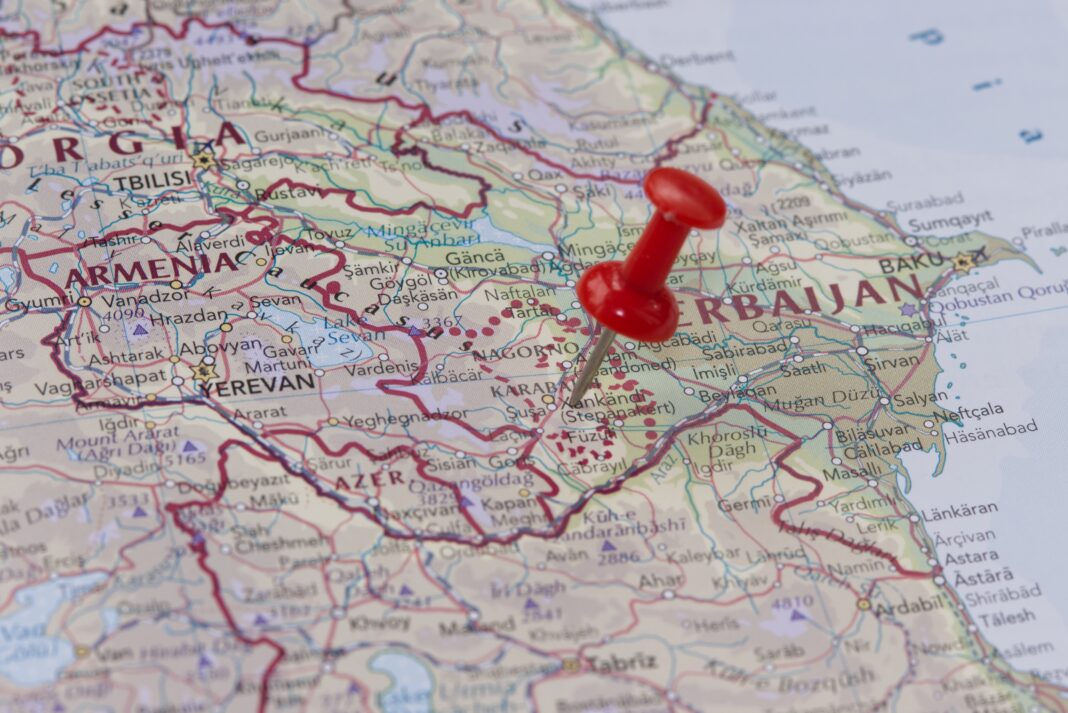by Kateryna Mishchenko
Russia began withdrawing its peacekeeping contingent, which was stationed in Nagorno-Karabakh and has now come under Azerbaijani control, starting from April 16. This information is reported by Azerbaijani media outlets ARA and Musavat.
It is noted that Russian military personnel have already handed over their posts to the Azerbaijani police in the Khudavang Monastery in the Kalbajar district. The withdrawal of troops from the base in Khodjaly is also underway. It is expected that this process will be completed within a few days.
As reported by Russian news agency Interfax, the spokesperson for the Russian President, Dmitry Peskov, confirmed that Russia has begun withdrawing its peacekeeping forces from the territory of Karabakh, which has returned under Azerbaijani control. “Yes, this is indeed the case,” he replied when asked by journalists to comment on the information from Azerbaijani media about the start of the withdrawal of the contingent.
The contingent was deployed in the region based on a trilateral agreement between Azerbaijan, Armenia, and Russia, signed on November 10, 2020. According to the agreement, the Russians were supposed to stay in Karabakh until 2025. According to Russian media reports, the contingent consists of 1,960 military personnel armed with small arms, 90 armored personnel carriers, and 380 units of automotive and special equipment.
The territorial dispute between Armenia and Azerbaijan over Nagorno-Karabakh has been ongoing since the late 1980s. The predominantly Armenian-populated Nagorno-Karabakh Autonomous Region, with the support of Armenia, declared its independence from the Azerbaijan SSR, and in September 1991 proclaimed the establishment of the ‘Nagorno-Karabakh Republic.’
During the armed conflict period of 1988-1994, around 30,000 people died in the separatist region. Nagorno-Karabakh and several adjacent districts of Azerbaijan came under the de facto control of Armenian armed forces. As a result, hundreds of thousands of people, mostly ethnic Azerbaijanis, became refugees and internally displaced persons.
The ‘Nagorno-Karabakh Republic’ is officially unrecognized by any UN member state, including Armenia. In 1993, the UN adopted four resolutions calling for the withdrawal of Armenian forces from the Karabakh region and the recognition of the territory as part of Azerbaijan.
Following a renewed escalation of the situation in late September 2020, Azerbaijan regained control of areas around Nagorno-Karabakh and captured the city of Shusha (known as Shushi in Armenian). The following day, Nikol Pashinyan (prime minister of the Republic of Armenia), İlham Aliyev (president of Azerbaijan), and Vladimir Putin (Russian president) signed a statement on a ceasefire in Nagorno-Karabakh.
Afterward, Azerbaijan began blockading areas of Karabakh populated by ethnic Armenians: checkpoints were set up on the only road, preventing any shipments, including food and humanitarian aid, from entering the region. Residents of Armenian districts in Karabakh reported experiencing hunger.
On September 19, 2023, Azerbaijan launched an “anti-terrorist operation” in the Armenian-populated areas of Karabakh, which ended with the authorities of the self-proclaimed republic surrendering. On September 28, the head of the unrecognized Nagorno-Karabakh Republic, Samvel Shahramanyan, signed a decree on the cessation of its existence from January 1, 2024, and the dissolution of government institutions.
Tens of thousands of people left Karabakh and relocated to Armenia. In March 2024, the prime minister of the Republic of Armenia, Nikol Pashinyan, announced the start of border demarcation and delimitation between Armenia and Azerbaijan.
On the cover photo, Nagorno-Karabakh pinned on geographic map ©Below the Sky/Shutterstock.com
























